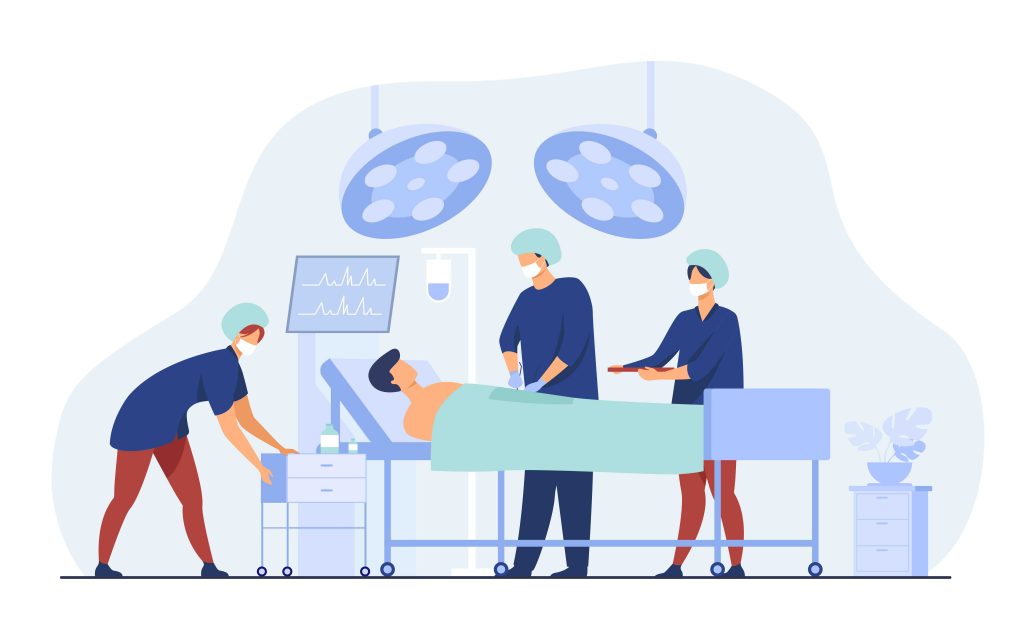
What is an Interventional Radiology?
One of the most technologically advanced and fastest growing specialties of modern medicine
Interventional Radiology procedures provide minimally invasive, targeted treatment and diagnosis of cancer. Image guidance is used in combination with the most current innovations available to treat cancerous tumors while minimizing possible injury to other body organs.
These techniques are most often recommended for patients whose cancer cannot be surgically removed or effectively treated with chemotherapy. These procedures are also frequently used in combination with other interventional techniques or treatments.
How is Interventional Radiology used in cancer treatment?
Personalized treatment approach
Our priority is to treat you with the most appropriate, least invasive treatments available for your cancer type. Below are some of the most common interventional radiology procedures we perform. Most procedures are done on an outpatient basis or during a short hospital stay.
Diagnostic Intervention
Image-guided Biopsy
An image-guided biopsy is a minimally invasive procedure that uses imaging guidance to get a tissue sample for diagnosis. Doctors rely on real-time images from ultrasound or CT scans to precisely guide a needle into the suspicious area. This approach offers several advantages over traditional biopsies:
Increased Accuracy: Image guidance ensures the needle targets the exact area of concern, leading to a more accurate sample and reducing the risk of missing crucial tissue.
Minimally Invasive: Smaller incisions and needle use lead to faster recovery times and less discomfort for patients.
Daycare Procedure: Many image-guided biopsies can be performed on a daycare basis, allowing patients to return home after a short observation period.
A
Image-guided biopsies are used for different organs:
Breast: For breast lumps or abnormalities detected during a mammogram or ultrasound, image-guided biopsies like stereotactic or ultrasound-guided core needle biopsies can be used.
Lungs: CT scan guidance is commonly used for lung biopsies, especially for nodules or masses that are difficult to reach with a bronchoscope (a thin tube inserted through the airways).
Liver: Ultrasound or CT scan guidance is often used for liver biopsies to diagnose liver disease or evaluate suspicious lesions.
Kidney: Ultrasound or CT scan guidance is typically used for kidney biopsies to diagnose renal cancer.
Bones: CT scan or fluoroscopy (real-time X-ray) guidance is used for bone biopsies to diagnose bone tumors, infections, or other abnormalities.
Lymph Nodes: Ultrasound or CT scan guidance can be used for lymph node biopsies to assess for cancer spread.
Therapeutic Intervention
Image-guided percutaneous drainage
Image-guided percutaneous drainage is a minimally invasive procedure that uses imaging technology to drain fluid collections (like abscesses) or blockages within the body.
Minimally Invasive: Tiny incision compared to traditional surgery leads to faster recovery times and less pain for patients.
Precise Targeting: Image guidance ensures accurate placement of the needle or catheter, minimizing the risk of damaging surrounding tissues.
Short Hospital Stay: Many drainage procedures can be performed on a daycare basis or require a shorter hospital stay compared to open surgery.
Effective Treatment: Percutaneous drainage can effectively remove fluid collections and resolve blockages, promoting healing and improving symptoms.
A
Image-Guided Percutaneous Drainage are used for:
Pleural Effusion Drainage: Excess fluid buildup in the space between the lung and chest wall (pleural effusion) can be drained using this technique.
Ascites Drainage: Abnormal accumulation of fluid in the abdomen. While diuretics are the first line of treatment, image-guided percutaneous drainage can be a valuable option for patients with severe ascites or those who don’t respond well to diuretics.
Abscess Drainage: Infected fluid collections (abscesses) are drained in various locations like the abdomen, lungs, or pelvis.
It’s important to note that image-guided percutaneous drainage for pleural effusion and ascites is not a cure for the underlying condition causing the fluid buildup. It offers temporary relief and may need to be repeated depending on the severity of the pleural effusion or ascites and their underlying cause.
Vascular Access
Venous Port Placement
Venous port placement involves implanting a small medical device called a port-a-cath under the skin, typically in the chest. This port provides long-term access to a central vein for administering medications, fluids, nutrition, and blood draws.
The Device:
- The port itself is a small, flat disc made of metal or plastic with a self-sealing rubber septum on top.
- A thin, flexible catheter is attached to the port and threaded into a large vein near the heart during placement.
Procedure:
- Venous port placement is typically performed under local anesthesia.
- Using ultrasound or fluoroscopy (real-time X-ray) for guidance, the catheter is inserted into a vein in the neck and threads it up to a large vein near the heart.
- The port is then placed in a pocket created under the skin in the chest area.
- Once implanted, the port is accessed with a special needle (non-coring needle) for administering medications or drawing blood. The self-sealing septum closes after each needle insertion, preventing leaks.
A
Benefits:
- Convenience: Provides long-term, easy access to a central vein, eliminating the need for frequent needle insertions in smaller peripheral veins.
- Comfort: Reduces discomfort associated with repeated needle sticks.
- Reduced Risk of Infection: Since the port is implanted under the skin and accessed with a special needle, the risk of infection associated with repeated peripheral IV insertions is minimized.
- Durability: Venous ports can remain in place for months or even years, depending on individual needs.
Who Needs Venous Port Placement?
- Patients requiring long-term intravenous (IV) therapy, such as chemotherapy or antibiotics.
- Individuals who need frequent blood draws.
- People with difficulty accessing smaller peripheral veins.
Overall, venous port placement offers a safe and convenient alternative to traditional peripheral IVs for patients requiring long-term central venous access.


